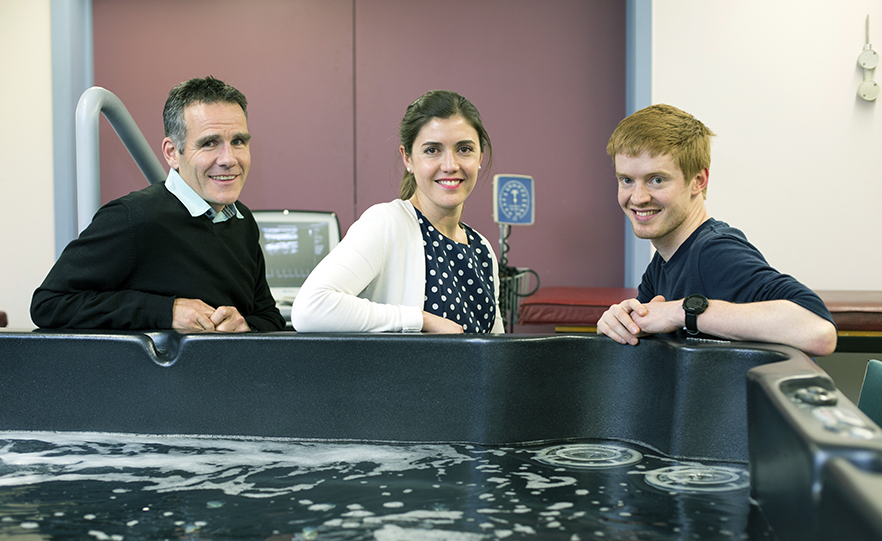
Right to left: Professor Jim Cotter, Dr Kate Thomas (Department of Surgical Sciences), and Dr Ashley Akerman (School of Physical Education, Sport and Exercise Sciences).
A University of Otago study comparing exercise and heat therapy was the hottest article of the year in a leading United States journal.
The paper was awarded Best Research Article 2020 by the American Journal of Physiology – Heart and Circulatory Physiology based on the number of citations and full-text downloads.
Dr Ashley Akerman (School of Physical Education, Sport and Exercise Sciences, now University of Ottawa, Canada) and Dr Kate Thomas (Department of Surgical Sciences) wrote the article with several specialist colleagues.
“It's a great collaborative paper,” Dr Thomas says. “We had on board a professor of vascular surgery, exercise physiologists, a physiotherapist and a cardiologist, so it was a really strong, multidisciplinary team.”
The 12-week study compared the benefits of exercise and heat therapy for a group of patients with peripheral arterial disease (blockages in leg arteries affecting the blood supply to their muscles).
Half the group was enrolled in a walking exercise programme while the other half underwent regular hot water immersion involving sitting in a spa pool for up to 30 minutes several times a week.
“At the end of 12 weeks we compared fitness, walking distance, pain, blood pressure and other physiological outcomes and found that both the heat therapy and walking were associated with improvements in walking distance and blood pressure.”
“As a conservative therapy it may have potential as an alternative form of cardiovascular conditioning for individuals with PAD, especially if they don't need to walk long distances but want to be able to walk a little bit further, like round a supermarket, without getting pain in their muscles.”
Dr Thomas has a background in exercise physiology and works closely with colleagues and students at the School of Physical Education, Sport and Exercise Sciences. She said the idea for the study stemmed from a long-standing collaboration with Professor Jim Cotter.
“So many of the things that happen when we exercise in terms of our physiological response also happen when we get hot. There's a lot of overlap. When you exercise your body temperature rises, your blood pressure goes down, your heart rate goes up, the blood flow to you skin and muscles increases. A lot of those same things happen when you just get hot passively when you're sitting in a spa or sauna.”
“We're trying to study that overlap and figure out which of those elements are most useful on their own because for people who face barriers to exercise, there's potential there for therapy. Obviously exercise is still the best medicine if people are able to undertake it because of the wider benefits.”
Dr Thomas, Professor Cotter and Brendon Roxburgh (PhD candidate) are currently running a trial investigating the effects of heat therapy versus high-intensity upper limb exercise on fitness and cardiovascular health for patients with lower limb osteoarthritis.
